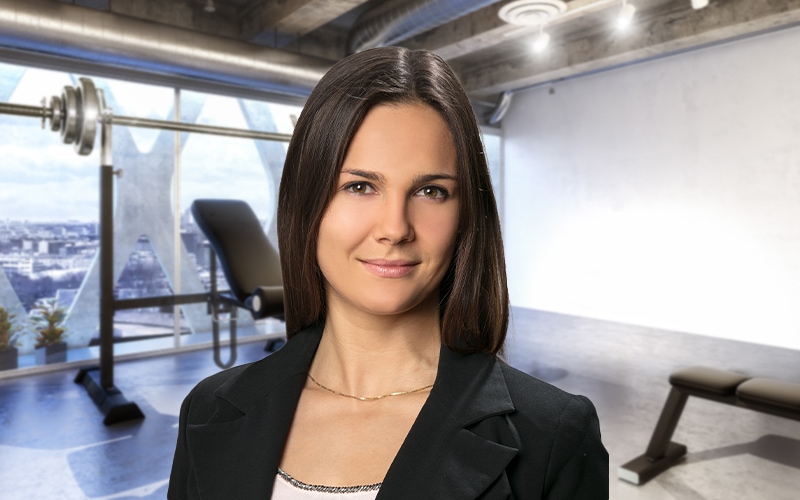Fit for a long life: The importance of fitness and strength training in old age
A comparison of demographic data over the last few years shows a clear shift in the age structure over the long term and a continuous increase in the number of Swiss people over 65 years of age. 1 According to the Federal Statistical Office, the average life expectancy in Switzerland for 2025 will be around 83.3 years for men and around 86.4 years for women. That corresponds to more than a doubling compared to the year 1880.²
However, if you take a look at the number of visitors to the fitness studios, you can unfortunately see an opposite trend. The proportion of those over 65 years of age has actually declined. Especially during the time with various corona restrictions, many older people no longer dared to train and after the lockdown months did not tackle the return to work.
But why is that and why would targeted strength and coordination training be so important for the 65+ age group?
After the last two Corona years, the fear of infection is very understandable, especially since the seniors were classified as risk patients per se and from the beginning. However, the consequences of long-term inactivity, such as deteriorated body composition, a weakened immune system and increasing social isolation, increase the likelihood and thus the concern of infection. This is accompanied by a general increase in age-specific diseases and the age-related decrease in neuromuscular performance. These include musculoskeletal disorders such as osteoporosis and arthrosis, fragility and of course sarcopenia, a generalized loss of muscle function, strength and mass. With increasing age, it is more difficult to maintain muscle mass and to counteract the catabolic processes, which is primarily associated with a loss of maximum and speed strength. The loss of strength and deteriorated static and dynamic postural control lead to an increased frequency of falls with often serious consequences and a loss of autonomy and quality of life. 3 Precisely for this reason, from a preventative perspective, seniors should follow a training program specifically tailored to them, with targeted strength, coordination and balance exercises. With realistic and effective planning, changing load parameters and progressive intensity, hypertrophy can take place in old age and an increase in maximum and speed strength can be achieved. This counteracts the age-related degradation processes and mobility, independence and quality of life can be maintained for quite some time.
So it’s never too late to start exercising or to start again. Beginners or returnees after longer breaks are first recommended to get used to with lower stress normative. People without previous experience should pay particular attention to this. First of all, the coordinative prerequisites must be created in order to achieve a technically correct execution. This also includes the safe execution of the exercises over the entire range of motion. This improves soft tissue movement limitations in older people over time and helps ensure mobility. In a further step, however, it is very important to increase the intensities and incorporate strength exercises with a high load and fewer repetitions into the training routines. Only then are the fast-twitching type 2 muscle fibers activated, which are broken down quickly, especially with increasing age. This also means that seniors should be lured out of their comfort zone in a controlled manner in order to achieve the desired positive effects and to counteract the physiological aging process.
A significant increase in physical and cognitive performance can already be observed with targeted strength training including coordination and balance exercises 30 minutes 2-3 times a week. This improves body composition, reduces the risk of falling and prevents a variety of age-related diseases. Various clinical and epidemiological studies have been able to prove an effect of physical activity on morbidity and mortality indicators in older people. Physical activity and adequate protein and vitamin D intake are the most important factors in staying fit for a long life.
We are proud of our customers who, even at the age of 90+, still do their training with us regularly and have integrated the time in the fitness center into their everyday life.
That’s why we also hope to welcome our older members, now after the Corona period, to our studios again and to be able to get new ones to do fitness & strength training. We are also happy to look after and motivate our seniors individually depending on their personal goals and fitness level and help them to stay active for as long as possible, to be able to move safely and of course to improve their quality of life.
Sources:
– 1 statista.com
– 2 bfs.admin.ch
– 3 Zahner, L., Donath, L., Faude, O. und Bopp, M. (2014). Krafttraining im Alter: Hintergründe, Ziele und Umsetzung. Departement für Sport, Bewegung und Gesundheit, Universität Basel
©swiss active – Legal action will be taken in response to copying or other duplication.
Author
The first basefit.ch studio was opened in 2008 with the aim of making fitness accessible to everyone in Switzerland at affordable prices, in geographical proximity and with good quality. This concept has remained unchanged to this day and is still limited to the really essentials such as a very good infrastructure, friendly & motivated employees, high hygiene standards, health insurance recognition and easy accessibility in a central location. Puregym operates over 40 fitness centers in Switzerland, has a total of more than 80,000 members and over 350 employees.




